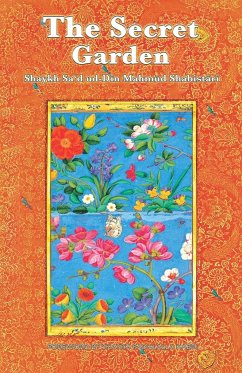Shaykh Sa'd ud-D¿n Mahm¿d Shabist¿r¿ was born around 1250 CE in Shabist¿r, near Tabr¿z, in Iran. 'The Secret Garden' (Gulshan-e R¿z), one of two works of mystical poetry he produced, was composed in 1317 CE in response to questions on profound Sufi metaphysics sent to him by a contemporary Sufi Master, Shaykh Rukn ad-D¿n Husayn¿ Haraw¿, himself a renowned Sufi master from Azerbayjan. In this short, didactical poem of one thousand rhyming lines, Shabistari skillfully references the body of poetic imagery used by previous Sufi masters in their works and contributes significantly to the codification of the terms used by Sufis to signify the facets and realities of the journey to awakening to Reality. Shabist¿r¿'s penetrating answers cover a variety of themes on the Sufi path and the progress of the human soul and reflect the influence of the doctrine of the Unity of Being represented in the work of Ibn 'Arabi, among others. His exposition elucidates the interconnectedness of reason, revelation and unveiling in the symbolic garden that offers both the thorns as well as the heady perfume of spiritual awakening. Recognized as a classic of medieval philosophy and theosophy, 'The Secret Garden' was first brought to western attention in Europe in the 17th century, and continues to be appreciated as a masterpiece in the canon of Sufi literature. You ask me to explain to you what thinking is, as you are still confused as to its meaning. Thinking is travelling inwardly from illusory nonexistence to the Real - that is leaving the separation of multiplicity for the gathered whole. Go and sweep out the house of your heart - prepare a place for the Beloved. When you leave, He comes in and shows His majesty to your 'you', purified of yourself. Like the growth of the seed into the form of the tree, a line of movement develops from the inner point of truth into the outward form. When the traveller on the path has completed the circuit of return to separation, then his last point as man is joined to the first of the Real.








